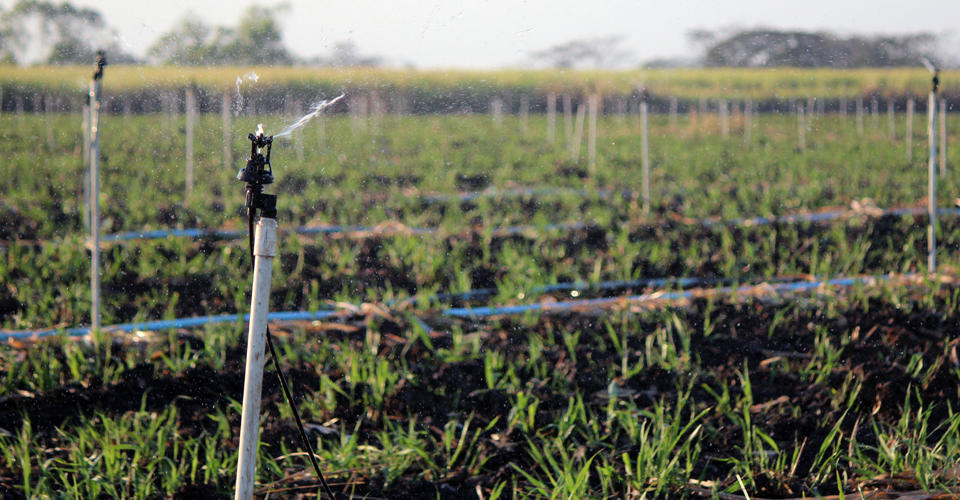How Sugarcane Product Is Revolutionizing the Global Sweetener Industry
How Sugarcane Product Is Revolutionizing the Global Sweetener Industry
Blog Article
The Trip of Sugarcane: From Harvest to Everyday Products
The journey of sugarcane is a multifaceted process that starts with careful growing and culminates in a selection of products that penetrate our day-to-day lives. As we check out the various elements of sugarcane's journey, its duty in sustainability and the wider implications for our setting come into sharper focus.
Farming of Sugarcane
The cultivation of sugarcane is a crucial farming process that calls for particular ecological conditions and management methods. Optimal growth takes place in tropical and subtropical regions where temperature levels range between 20 ° C and 32 ° C. Adequate rains or watering is crucial, as sugarcane flourishes in damp dirt with well-drained problems (sugarcane product). Soil quality considerably influences yield; thus, farmers frequently perform soil tests to determine nutrient demands
This method helps with effective gathering and optimizes sunshine direct exposure. Plant rotation and intercropping are recommended techniques to enhance dirt fertility and reduce pest infestations.
Prompt application of these fertilizers can considerably boost sugar returns. In general, effective sugarcane growing hinges on a mix of environmental stewardship, calculated planning, and recurring administration practices.
Collecting Techniques
Effective sugarcane growing culminates in the collecting phase, which is crucial for making best use of yield and ensuring top quality. The timing of the harvest is vital; sugarcane is generally collected when sucrose levels optimal, typically in between 10 to 18 months after planting. This period differs based upon environment, soil kind, and sugarcane selection.
Gathering strategies can be broadly classified into guidebook and mechanical methods. Hands-on harvesting is labor-intensive, relying on proficient workers who use machetes to cut the stalks short. This method permits for discerning harvesting, where only the ripest walking sticks are picked, therefore enhancing general sugar web content.
Conversely, mechanical harvesting has gotten appeal due to its effectiveness and cost-effectiveness. Specialized farmers equipped with cutting knives and conveyor systems can refine huge locations quickly, considerably minimizing labor prices. However, this method may cause the incorporation of premature walking canes and a potential decrease in sugar quality.

Regardless of the method employed, guaranteeing that harvested canes are transferred swiftly to refining centers is necessary. Trigger managing reduces putridity and preserves the honesty of the sugarcane, establishing the stage for optimum handling.
Processing Methods
Processing sugarcane entails a number of important steps that transform the harvested stalks right into functional products, primarily sugar and molasses. The first stage is washing the walking cane to get rid of soil and debris, adhered to by the extraction of juice through squashing or milling. This process generally uses hefty rollers that damage the cane fibers to launch the pleasant fluid included within.
As soon as the juice is drawn out, it goes through information, where impurities such as dirt bits and bagasse are gotten rid of. This is typically accomplished by including lime and heating up the juice, allowing sedimentation. The cleared up juice is then focused through dissipation, where water content is minimized, resulting in a thick syrup.

Inevitably, the processing of sugarcane not just produces sugar and molasses however additionally lays the groundwork for different by-products, which will be checked out in subsequent discussions.
Products Derived From Sugarcane
Sugarcane is a functional crop that produces a vast array of products beyond simply sugar and molasses. Among the main spin-offs are ethanol and biofuels, which have actually gained importance as renewable resource sources. Ethanol, created via the fermentation of sugarcane juice, works as an alternate to fossil gas and is often mixed with gas to develop cleaner-burning gas, reducing greenhouse gas emissions.
Furthermore, sugarcane is a substantial resource of bagasse, the coarse deposit remaining after juice extraction. Bagasse is utilized in different applications, including the production of paper, eco-friendly product packaging, and as a biomass gas for power generation. Its usage not just reduces waste but also enhances the sustainability of sugarcane processing.
Moreover, sugarcane-derived items include the food market, where resource it works as a natural flavor representative and sweetener in different culinary applications. In the realm of cosmetics, sugarcane extracts are included right into skincare products as a result of their all-natural exfoliating buildings.
Environmental Effect and Sustainability
The growing and processing of sugarcane have substantial effects for environmental sustainability. This crop calls for considerable water resources, often leading to deficiency of regional water supplies and influencing bordering environments. Additionally, the usage of fertilizers and chemicals in sugarcane farming can lead to soil degradation and waterway contamination, presenting threats to biodiversity.

Lasting sugarcane farming additionally promotes dirt wellness through plant turning and minimized tillage, improving carbon sequestration. The fostering of these practices not just supports ecological honesty however likewise boosts the resilience of farming neighborhoods against environment change.
Conclusion
In summary, the trip of sugarcane includes numerous phases from growing to handling, ultimately leading to a large variety of products. The importance of sugarcane prolongs past plain sweeteners, adding to eco-friendly power via ethanol production, sustainable packaging through bagasse, and natural essences for cosmetics. This complex crop plays a critical duty in both dietary enrichment and environmental sustainability, highlighting its importance in contemporary agricultural and industrial practices.
Effective sugarcane growing finishes in the gathering stage, which is crucial for making best use of return and guaranteeing quality. The timing of the harvest is crucial; sugarcane is commonly collected when sucrose degrees peak, generally in between 10 to 18 months after growing.Processing sugarcane entails numerous critical actions that change the gathered stalks right into usable items, largely sugar and molasses.Sugarcane is a functional crop that produces a broad array of products beyond just sugar and molasses. In addition, the usage of fertilizers and pesticides in sugarcane farming can result in dirt destruction and waterway pollution, positioning risks to biodiversity.
Report this page